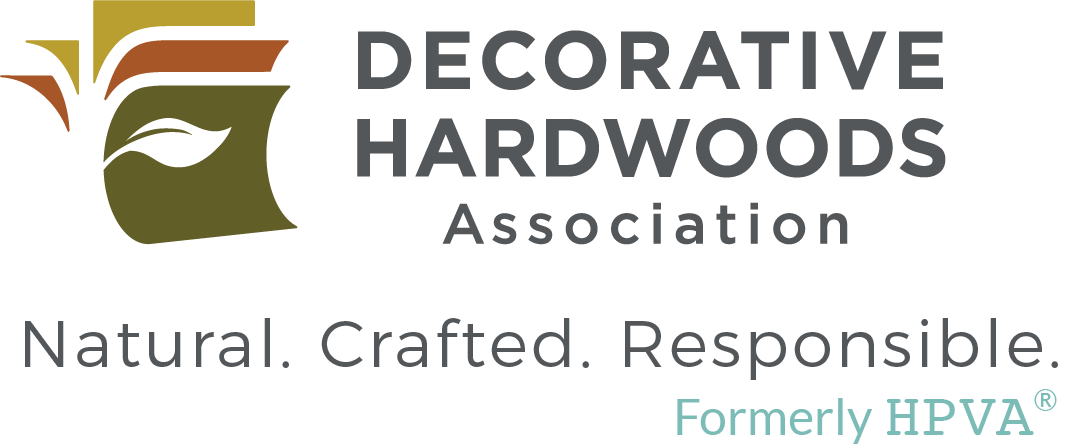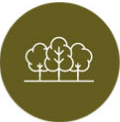Coronavirus: Government Resources & Assistance

See below for more information about coronavirus small business loans and additional lending programs.
Updated 3-31-2021
Congress passes PPP extension
The Senate passes the PPP Extension Act which the House approved on March 16. President Biden expected to sign immediately the measure into law. NAHB Now, March 25, 2021. Congress Extends PPP Application Deadline to May 31.
Previously
House passes bill to extend the Paycheck Protection Program (PPP). Next, the bill goes to the Senate
-
3.11 PPP Extention Act (PDF)
President signs COVID-19 legislation with new funding for PPP loans
Virginia launches grant program to support local agriculture and forestry industries, https://www.whsv.com/content/news/Virginia-launches-grant-program-to-support-local-agriculture-and-forestry-industries-571222471.html
Unemployment Claims Amid Coronavirus: A State-by-State Analysis
Last week, the U.S. Department of Labor reported that more than 40 million jobless claims had been filed nationwide over the course of the past 10 weeks. The U.S. Chamber's new interactive map provides an in-depth analysis of the state-by-state impact of the coronavirus pandemic and corresponding economic fallout. Click here to view the interactive map.
Please note that state data lags national data by one week, so the so the 2.4 million claims reported on May 28 are not yet included in these state numbers.
Paycheck Protection Program (PPP) Lending Operations Update
SBA and Treasury value all lenders and their small business customers.
To ensure access to the PPP loan program for the smallest lenders and their small business customers, starting at 4 p.m. today EDT through 11:59 p.m. EDT, SBA systems will only accept loans from lending institutions with asset sizes less than $1 billion dollars.
Please note, lending institutions with asset sizes less than $1 billion will still be able to submit PPP loans outside of this time frame. Please also note that lenders with asset sizes greater than $1 billion will be able to submit loans outside of today’s 4pm -11:59pm EDT reserved processing time.
This reserved processing time applies today April 29, 2020. SBA and Treasury will evaluate whether to create a similar reserved time again in the future.
SBA and Treasury continue to monitor loan system performance and will continue to provide frequent updates to the lending community. April 29, 2020
FAQs: Coronavirus Small Business Loan Questions
WATCH: Are you preparing for when you return to your flooring business after COVID-19 passes? Jim Buckles, consultant to the floor covering industry, shares some tips including applying for Economic Injury Disaster Loans.
https://floortrendsmag.com/videos?bctid=6148940058001
Fed Steps Up to Provide More Help to Small and Mid-Sized Businesses, Including PPP Borrowers
Last Thursday morning, the Board of Governors of the Federal Reserve System released the highly anticipated details of its massive $600 billion Main Street Lending program to support small and mid-sized businesses with up to 10,000 employees. The Program is particularly welcomed by businesses that are too large to be eligible for loans under for the Paycheck Protection Program (PPP). https://www.venable.com/insights/publications/2020/04/fed-steps-up-to-provide-more-help-to-small
Small Business Update
Phase III of the government’s response to the COVID-19 virus has been signed into law and creates a new, temporary loan program to assist businesses.
- The law provides $350 billion for 100 percent federally guaranteed loans for eight weeks.
- Companies may borrow up to 250 percent of their average monthly payroll cost and may be forgiven equal to the amount spent over eight weeks following the origination date of the loan.
- Eligible businesses must have paid salaries and payroll taxes before February 15, 2020, and have fewer than 500 employees.
- For business owners with multiple franchises or retail establishments (like hotels and restaurants) that have more than 500 employees in the aggregate, eligibility affiliation rules may be waived under certain circumstances.
- Loans can be used for “payroll costs” up to an annual rate of $100,000 per employee. This also includes interest on mortgage obligations, rent, and utilities.
- SBA-certified lenders and non-SBA lenders will be authorized to make Payment Protection loans through delegated authority for quicker processing.
- Loans will not require an application fee, personal guarantees, collateral, or closing costs.
For the Small Business Administration’s Coronavirus Small Business Guidance and Loan Resources, click here: www.sba.gov.
To apply for a COVID-19 Economic Injury Disaster Loan, click here.
The US Chamber of Commerce has also published a useful explanation of the benefits made available in the CARES Act.
- Phase III – CARES Act Implementation
On March 27, 2020, the CARES Act became Public Law No: 116-136, putting into place more than $2 trillion worth of relief to our nation’s healthcare system, individuals, small businesses, and industry. - Phase III Text and Summary Documents
Considering the magnitude of the CARES Act summaries will remain presented here. They have been reorganized so that the most comprehensive summaries from each party now appear directly after the linked final text. If you’re seeking any documentation not available here, please reach out to Capitol Counsel for assistance.
Final Text:
- FINAL-TEXT.pdf (Contains full legislative text with Appropriations package beginning on page 609)
Primary Summary Documents:
These documents encompass the Republican and Democratic views from the Senate of the summary of the entire CARES Act. Note that the Appropriations Committee and authorizing sections are separated for the Republican side.
- Senate Democratic Section by Section, whole Phase III bill: CARES Act Section-By-Section Summary (Dem).pdf
- Senate Republicans Section by Section, non-appropriations matters: CARES Section-by-Section FINAL.pdf
- Senate Republicans Section by Section, appropriations matters: Senate-Republicans-Appropriations-Division-B-Summary.pdf
Further Summary Documents:
- Appropriations Section by Section.pdf
- Appropriations-House_R_Appropriations-Coronavirus_Relief_Phase_III_Highlights_Detailed_Funding_Summary.pdf
- Banking Title Summary 3.25.20 FINAL.pdf
- C-3 summary_V1.2.pdf
- COVID 3 -- UI and Tax Title Summary.pdf
- E&C-Republicans-03_26_2020_CARES_EC_Republicans_Summary_and_Provisions_FINAL.pdf
- Education-and-Labor-House-R-Phase_3_CARES_Act_3.26.20_final.pdf
- Finance Health Section by Section Wyden edits final.pdf
- Financial-Services-House_R_3.26.20_CARES_Act_HFSC_Info_FINAL.pdf
- House-Admin- Republicans-3.26.20_CARES_Elections_Legislative_Branch_One_Pager_Admin.pdf
- Senate_Republicans_CARES_Section_by_Section_FINAL.pdf
- Small_Biz_REP-House_-3.26_SmallBiz_CARES_FINAL.pdf
- Stimulus Small Biz EXPLAINER FINAL.pdf
- Stimulus Small Biz Section By Section FINAL.pdf
- Summaries of Judiciary Provisions Senate COVID bill - 3.25.20.pdf
- Summary_Subtitle B - Air Carrier Worker Support.pdf
- T&I-Republicans_3.26_CARES_Act_T_I_Info.01.pdf
- Ways and Means Democrats- CARES provisions_0.pdf
- Ways and Means Republican-W_M_CARES-Summary.pdf
The information below was developed by Innovative Natural Resource Solutions LLC for our clients and friends, using publicly available information. Please be sure to consult your attorney and / or financial advisory prior to entering into any contracts, and be aware that terms of any loan should be carefully reviewed.
What is the SBA Paycheck Protection Program?
- Title 1 of the Coronavirus Aid, Relief, and Economic Security (CARES) Act is the Keeping American Workers Paid and Employed Act, which provides relief for small businesses and their employees who are affected by the outbreak of COVID-19;
- The key program is the “Paycheck Protection Program,” an emergency lending tool, administered by the Small Business Administration (SBA) under its existing 7(a) lending program, to provide loans to small business on favorable terms to borrowers impacted by the economic uncertainty brought about because of the pandemic;
- There is roughly $350 billion set aside for this program – it is the largest program targeted toward small businesses in the CARES Act;
- The Paycheck Protection Program has two main goals:
- Help small businesses cover immediate and near-term operating expenses, and
- Provide an incentive for employers to retain employees.
How does the Paycheck Protection Program Work?
- The program provides small businesses with 500 or fewer employees with federally insured, partially forgivable loans that can be used to cover operating expenses:
- Maximum loan is 250% of the employer’s monthly payroll costs, or $10 million (whichever is less);
- Payroll costs include wages, salaries, retirement contributions, healthcare benefits and contributions to retirement.
- The program has a number of attractive features for borrowers, including:
- Six to twelve months of deferred payments;
- Waiver of loan application and processing fees;
- Streamlined application and approval process
- Most importantly, the Paycheck Protection Program has a loan forgiveness feature:
- This effectively turns some of the loan into a grant that does not need to be repaid;
- Loan forgiveness equivalent to the sum spent on qualifying expenses:
- Payroll
- Rent
- Utilities
- Mortgage interest payments
- To qualify for loan forgiveness, borrowers must:
- Maintain their pre-crisis level of full-time equivalent employees (or face a reduction in forgiveness proportional to the reduction in headcount);
- Because some businesses have already been forced to make staffing reductions in response to shrinking markets and lost revenues, the legislation includes a provision that allows those companies to qualify for loan forgiveness if they have re-hired back to pre-crisis levels by June 30, 2020.
- Borrowers do not need to show economic harm, but do need to certify that:
- The current economic conditions created by COVID-19 necessitate a loan to support ongoing business operations;
- The funds will be used to maintain payroll and other covered expenses.
- Loan terms:
- 10-year maturity;
- Interest not to exceed 4%;
- Deferral of any payments for 6-12 months (when coupled with loan forgiveness provisions, this may mean some entities never make a payment).
- Lenders are expected to prioritize loans to small business and companies in rural areas, which describes most forest industries;
- Applications are through banks and other financial institutions that administer Small Business Administration loans. Check with your bank or financial institution to see if they can assist with this loan process;
- As of March 31, 2020, rules for banks making these loans are still in development. It is anticipated that these loans will be available in the near future, and companies are encouraged to reach out to their banks as soon as possible if they want to learn more about this opportunity.





